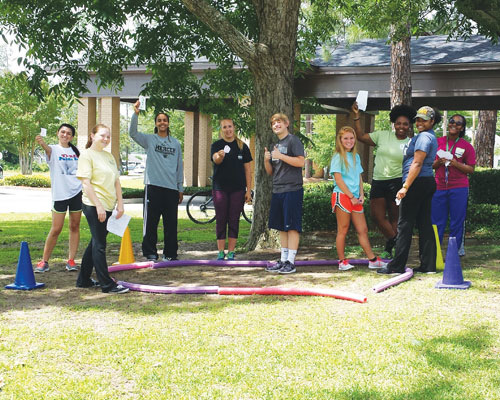That's why the National AfterSchool Association Healthy Eating and Physical Activity Standards reference "not permitting access to television or movies" and encourage out-of-school programs to provide opportunities for physical activity, rather than screen time. By the way, screen time just means time spent on television, the Internet, and mobile devices.
Here's the deal: What's important about this standard is limiting unnecessary screen time. It's about ensuring that if screen time is used, it is balanced with physical activity time.
Are you ready to flip the switch on screen time? Try one (or all) of these tips!
- Even if your program is technology-based or you use a TV for a campaign such as anti-bullying, take regular physical activity breaks. Use task cards for break ideas. Why not have a science, technology, engineering, and math (STEM) and physical activity fair to showcase creative ways to combine technology and movement?
- Use screens for movement. Try Fit for a Healthier Generation videos. If students are interested in videography, encourage them to make their own version. If they need ideas for activities, encourage them to pick from Classroom and AfterSchool Energizers.
- Never use screens as a reward. It's easy to default to using screen time as a reward, often with unhealthy foods. Tools such as Constructive Classroom Rewards provide a list of alternatives.
- Set a good example. Research shows that most parents do not set rules for watching TV, playing video games, or using the computer. Share screen-time practices with families. Send home physical activity ideas such as Activity Works – At Home.
- Explore your creativity. Forget the days when having a substitute teacher or a rainy day meant watching a movie! Find inexpensive and easy-to-use physical activity games in the Alliance for a Healthier Generation Resource Database. Give staff the support they need. Add learning a new game to your next staff meeting. Staff will have more fun and leave with a new tool.
- Be honest with children about food advertising. Seeing snack foods, candy, soda, and fast food on TV affects all of us. Start the conversation using the empowerme4life activity My Alternatives to Screen Time (page 78).
- For more resources to flip the switch on screen time and get kids up and moving, visit healthiergeneration.org.
This article was written by Daniel W. Hatcher, National Out-of-School Time Advisor, Alliance for a Healthier Generation, in collaboration with the National Recreation and Park Association, the National AfterSchool Association,and the Alliance for a Healthier Generation, all members of the Healthy Out-of-School Time Coalition. Contact Daniel W. Hatcher at Daniel.Hatcher@healthiergeneration.org, or on Twitter: @hatchdw.




